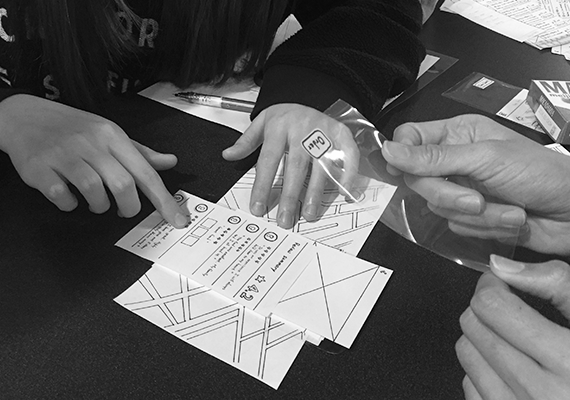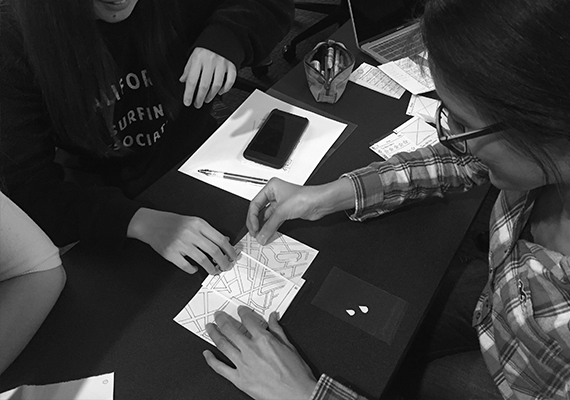With a busy schedule of working and studying, more and more workers and students choose to eat out rather than cook by themselves. They are frustrated with the flavors, nutrients, and prices of meals provided by restaurants, especially fast-food restaurants. With the consideration of health and the budget, homemade foods are still their favorite. Also, for students and migrants who left their home and traveled to the US, national cuisines are the panacea to motivate and cheer them up.
In the U.S, lots of people are good at cooking and they are also willing to share their meals with people. Thus, how to connect the cooks who are happy to share with eager people and build up a fascinating experience of having meals are the major purposes of my design.
| Date: | 2017 |
| My Role: | UX Designer |
| Category: | Individual Project |
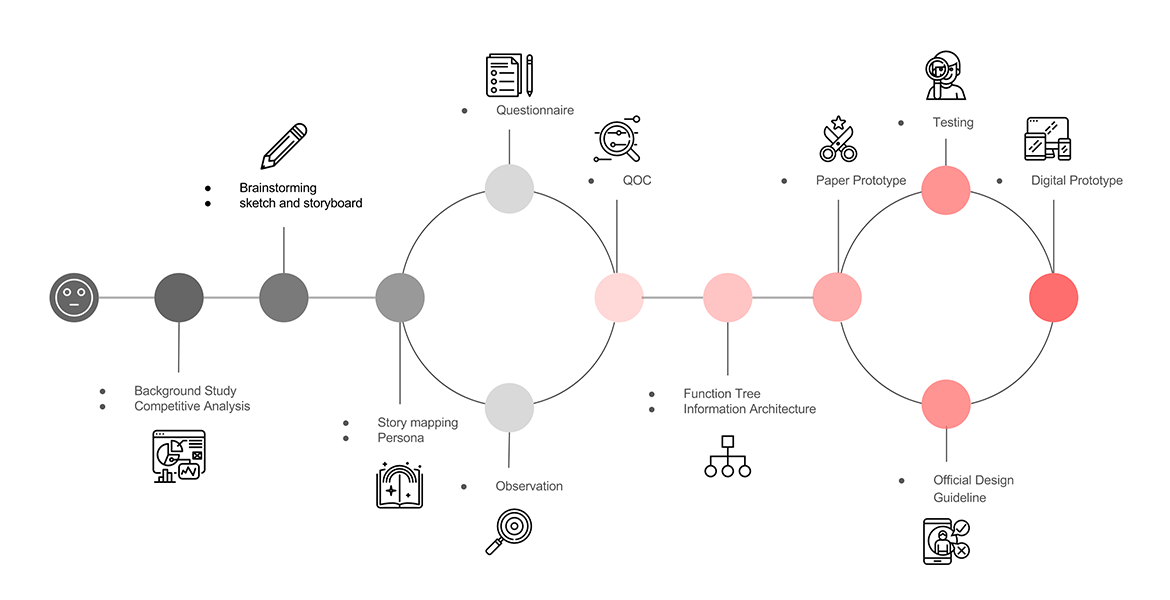
In order to understand end-users, people seeking meals and people providing meals, I designed a online questionnaire that collected:
Based on respondents’ dining habits, I directed them to answer different surveys, cook’s and searcher’s. In the cook’s questionnaire, I collected their reasons for cooking, their sharing experience, and the platforms/channels for communication they used. In the searcher’s questionnaire, I asked them their reasons for eating out, their consideration of purchasing foods, the factors of making decision.
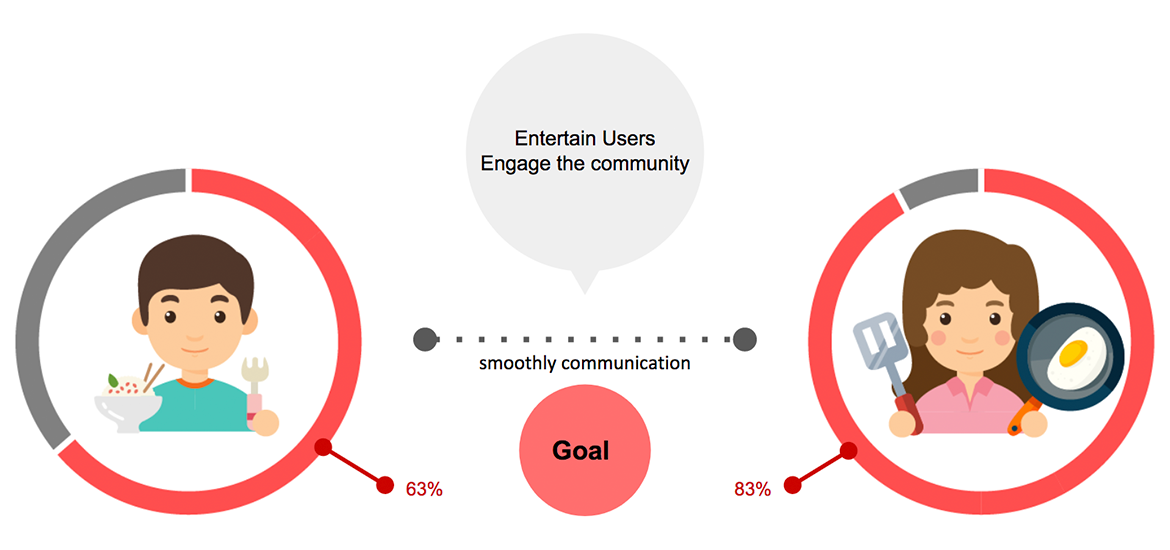
According to the online questionnaire, 83% of home cooks (number of samples: 177) have shared and are willing to share their meals with people. And, 63.5% of respondents who select “eating out” as their major dining behavior (number of samples: 74) mention that homemade foods are their favorites. And 52.6% of them mentioned that they have purchased and are willing to purchase homemade food from home cooks. They are busy office workers, international students, and migrants, and they are the people who are eager to have homemade meals. However, currently, these people seeking meals need a platform to connect them with the people who love cooking and are enthusiastic about sharing their dishes.
Project Goal
Create a platform that connect the meal hunters and homecooks.In order to build the connection between people seeking meals and people providing meals, firstly, I need to know what do the people seeking meals do, when they are seeking their meal and how do they make the decision. Moreover, what mechanism should the cooks use for providing their dishes? Also, what issues that home cooks have faced when they shared their meals? Furthermore, I want to understand what are the key factors that influence people seeking meals during the meal hunting.

Major question
What are the factors that influence meal hunters in ordering the meal?Meal searcher
According to the research, the top three reasons for eating out are
About the food, the searchers care about: delicious, food hygiene and freshness.
The top three key factors that influence the people seeking meals and guide them to make the decisions are:

Major question
How do home cooks share the meal?Home Cooks
According to the research, the top reasons of sharing food are
Home cooks would like to provide meals that are
I played as a shadow in a local meal sharing group via WeChat. I studied how do they communicate with each other, what documents are used, how to place the orders and how the cook proposed the dishes.
In order to streamline the preparation, I learn that home cooks will limit the offers for the different dishes. They also need buyers to make a reservation early
In order to communicate with buyers, the home cook will: Use lots of pictures to demonstrate the dish
Based on the questionnaire and the observation from home cooks’ group, three personas represent the target audiences of the meal sharing service.
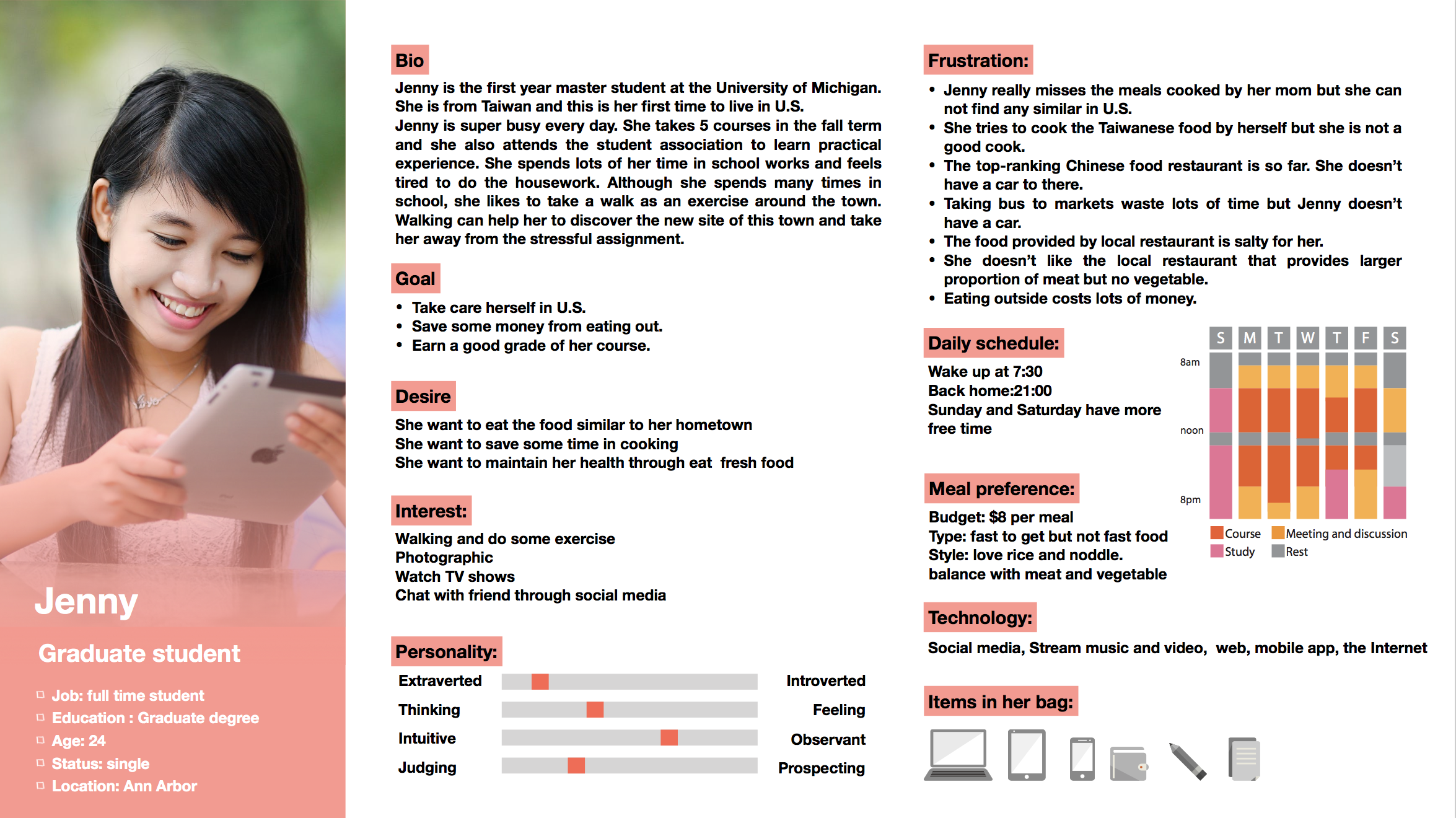
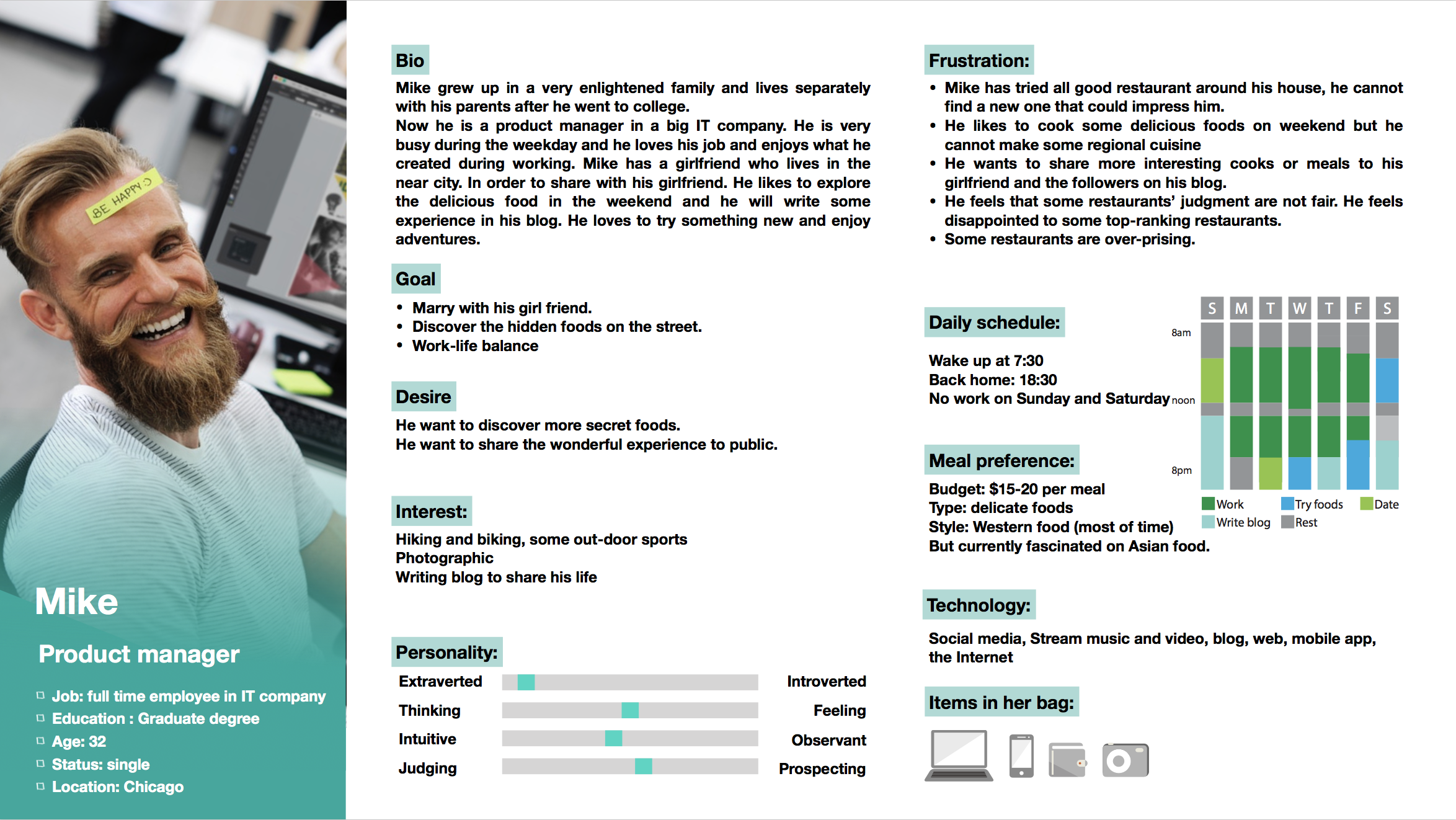
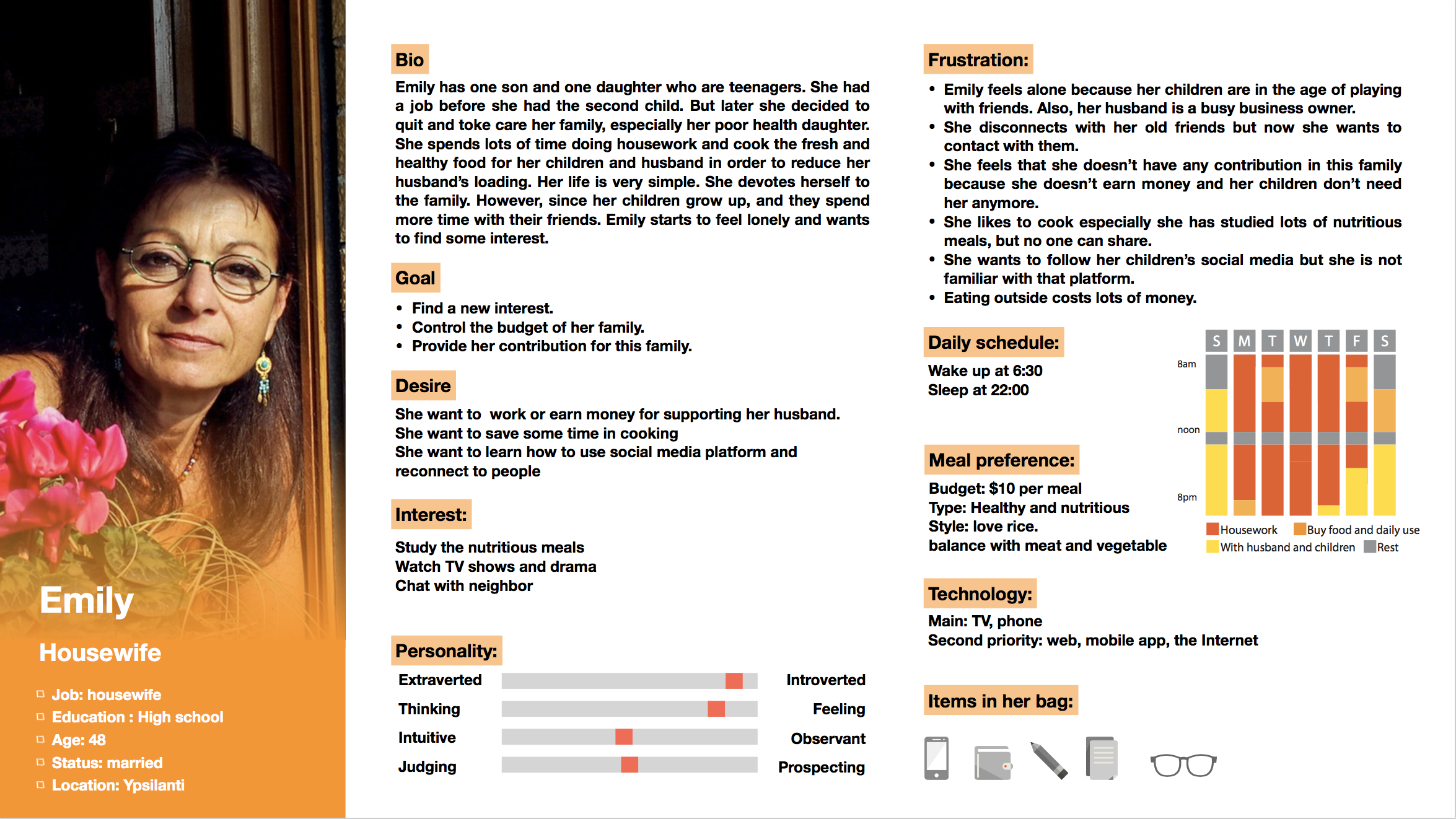
I used story mapping to go through the whole service and list all potential touch points between the cooks and meal searchers in my service. I included both the meal searcher and providers, and drew their daily timelines. Through the story mapping, I could have a complete flow of my users’ life and I could point out the potential opportunities in which my application can intervene. In the store mapping, I discovered that the dining time is the perfect time for me to connect the people seeking meals and cooks, especially in the time-limited concept. People seeking meals can obtain the food immediately just after cooks cooked it.

With the knowledge from the observation and competitive analysis, I started brainstorming and proposed several ideas for the meal sharing service. Sketching the ideas allowed me to imaging the scenario and the interaction firstly, no matter how crazy the ideas were. I drew several key ideas on the paper, including ingredients sharing, zero food waste, leftover food from individuals’ homemade meals. With the feedback from course instructors and potential end-users, I narrowed down the ideas and focused on the concept, Pokemon Go.
In this idea, meal searching became a game that users could walk through the streets and discover meals. This idea entertains users but loses the efficiency of finding a meal. After considering the feasibility and the entertainment, I decided to extract the pros from the ideas of Pokemon Go and integrate the features of the widely used app to construct my app.
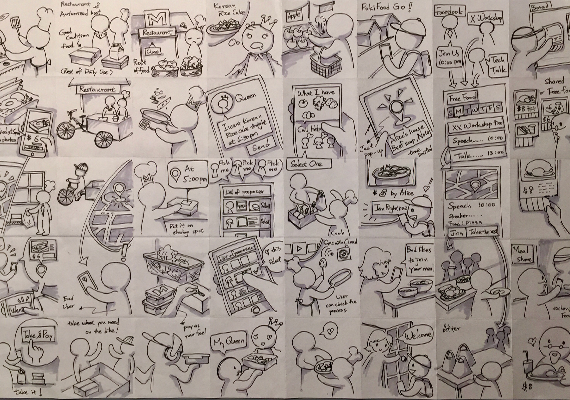
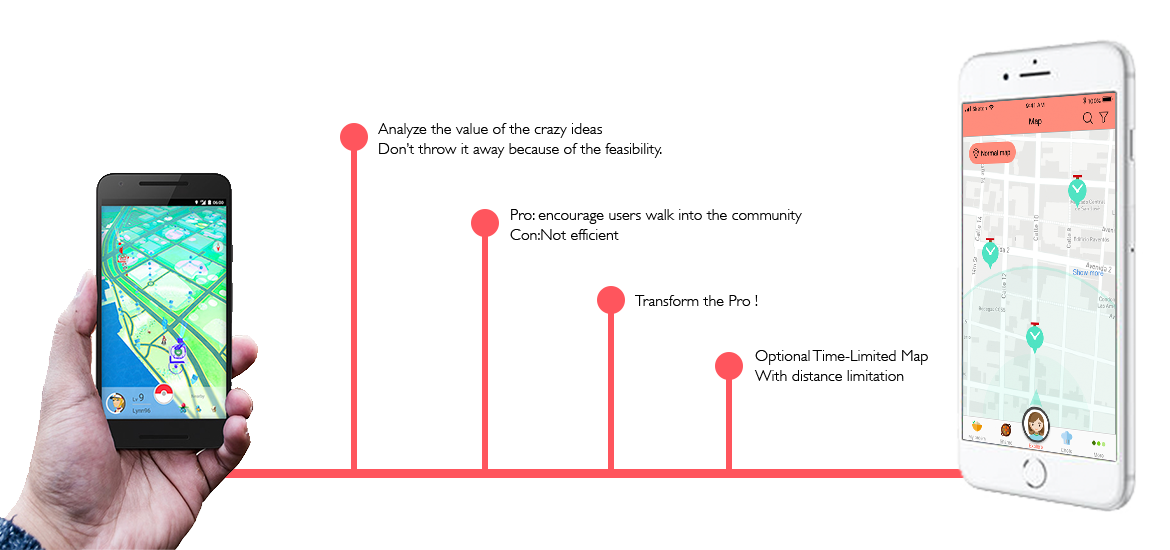
When users open the PokeMeal, the first task users have to do is log-in. Users can either use their google and Facebook account or a created PokeMeal account. In order to provide the customized service, users need to enter their dining preferences, their favorite national cuisines, flavors, dietary restrictions and food allergies. Based on users’ different backgrounds, especially international students and migrants, they might prefer different cuisines and love different flavors. Their selections of dining preference will be the default filter which will be applied to the exploration map.

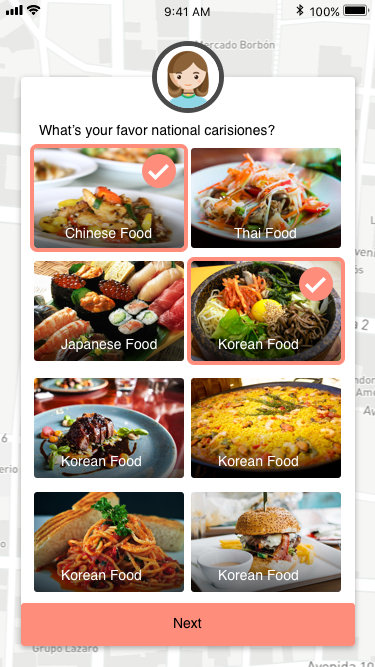
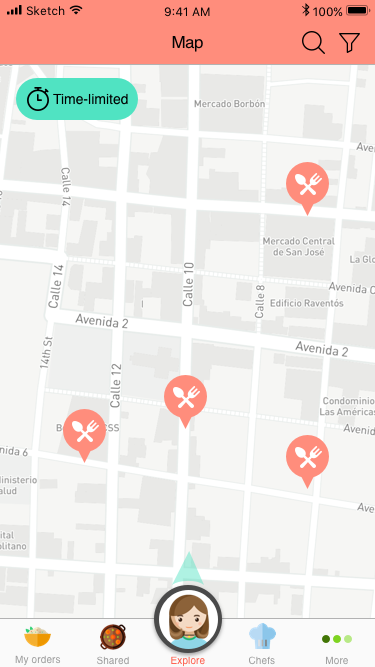
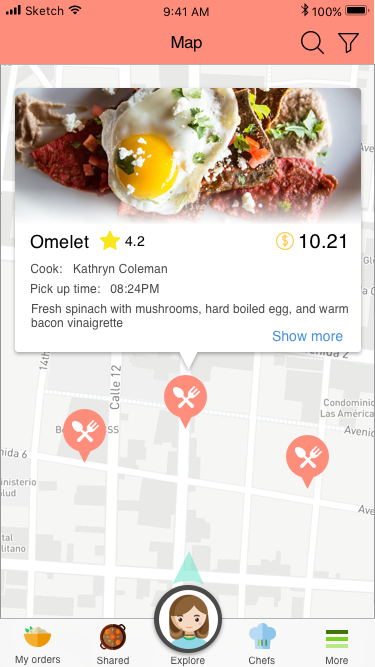
The most important feature, exploration. The exploration adopts the map view for users to manipulate. When users start hunting meals and click the pin on the map, a brief of the meal will pop up and will list the most important contents, photos, price and the average of reviews. The brief pop-up will also guide users to a detail page for more information.
From home cooks perspective
How to offer the food immediately when I cook too much?From meal hunter perspective
How to purchase the specially available meals at the moment?In this situation, the meal is more like a random offer provided by the home cook, just like the Pokémon randomly pop up a monster in the map. If meal hunters like to have this meal, they should browse the time-limited (adventure) map and hunt the special offer. Just like the Pokémon go.
In the time-limited map, there is a distance limitation for users to access information. The time-limited map encourages users to walk closer to the meal and discover the detail. Thus, users might not be able to check the meals that are out of range. This design can also specifically connect the time-limited meals to near searchers who can pick it up immediately.
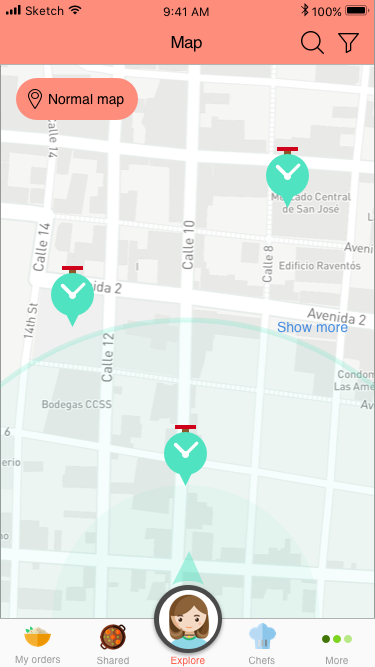
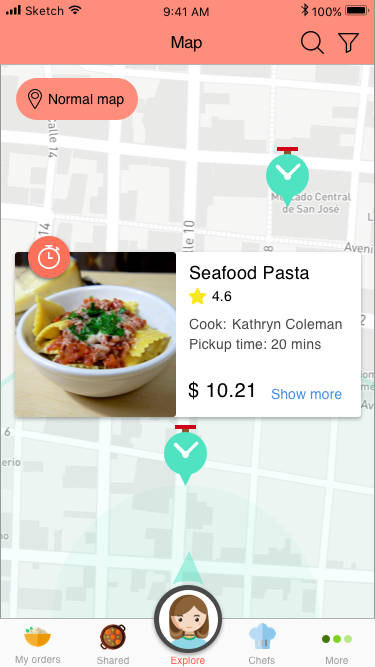
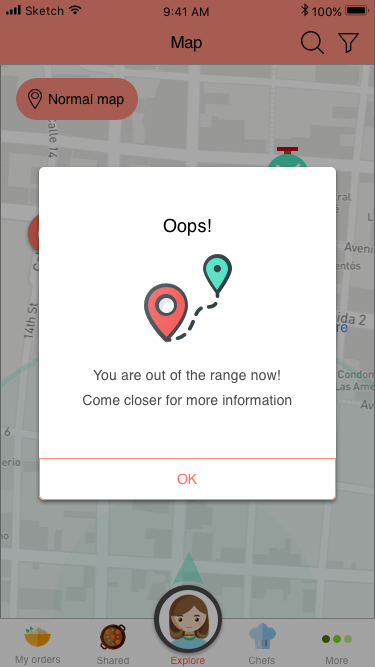
From home cooks perspective
How to promote the meal?From meal hunter perspective
How to make the decision of ordering?I emphasized the importance of pictures. Thus, the upper part of the screen contains the meal’s pictures.
I also designed the photo filter function for homecook. The visually delicious picture/meal affect the taste and users' experience a lot. Thus, it is important for homecook to marketing their dish with delicate display and pictures.
According to the online survey, most of the people seeking meals care about the pictures of the meal. Thus, in this application, several image filters are provided to cooks for editing and marketing their meals. Cooks can also set the amount, price and pickup time in the “add” page.
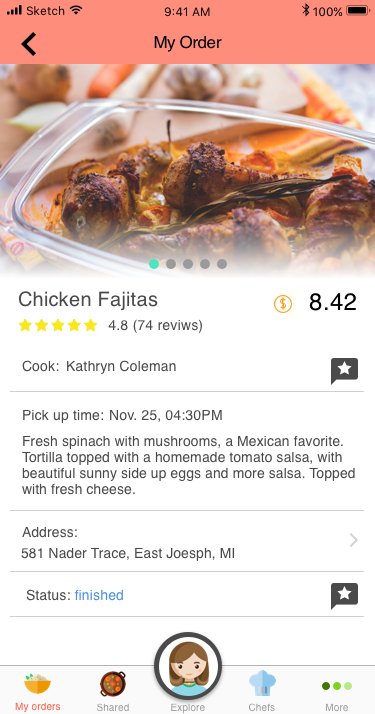
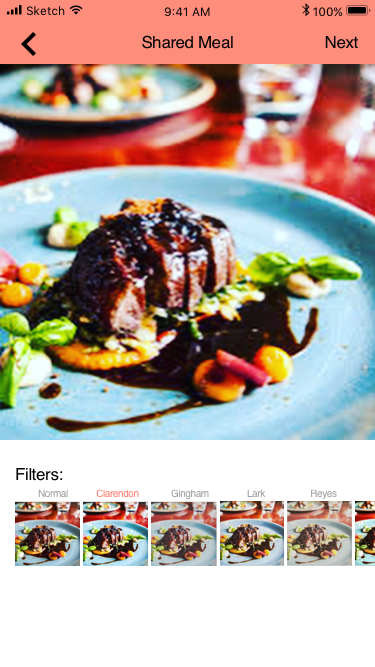
From meal hunter perspective
How to track my order and save the time for getting the meal?In “my order”, users will see three different statuses and the time for picking up. This information could help users monitor their order and schedule a time to pick up. Users don’t need to spend time waiting.
For the statuses, there are upcoming, finished and reviewed. The upcoming order is the new order that users haven’t picked up from the cook. The finished order represents the taken order but without review. After users add a review on the finished order, the order will be marked as reviewed.
In order to help users get the meal in a faster way, Pokemeal integrates the map and provides the navigation to the homecook's house.
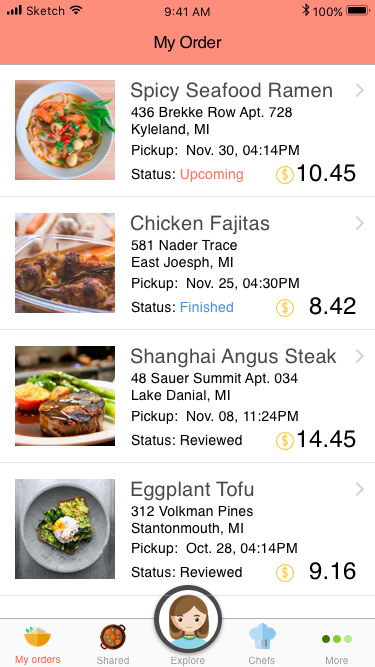
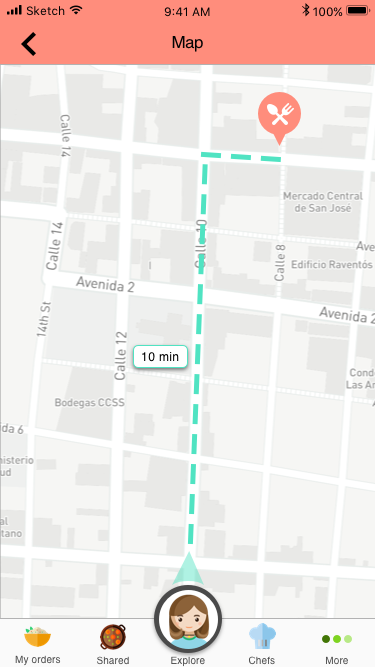
From home cooks perspective
How to manager the dishes that I offer?The “shared meal” feature is designed for the cook in this service. In “shared meal” page, meals are given four statuses, selling, sold out, canceled and expired. The status of selling and sold out are changed by the number of available meals. Also, cooks can cancel the meal when they are revising the meal for some reasons and the buyers will get the notification immediately. To protect meal searcher’s health and safety, the system will automatically mark the meal which has been sold more than two days as expired.
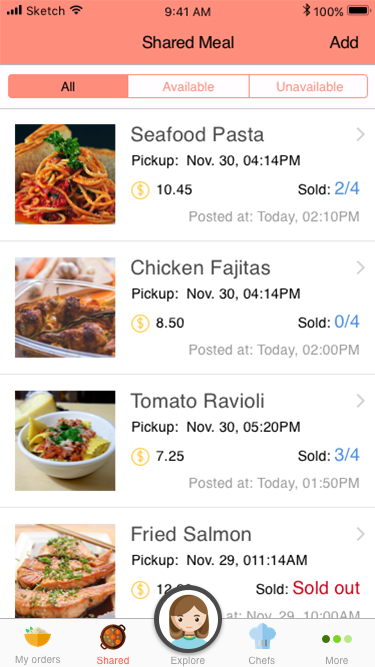
I used the index cards to create the paper prototype and invited potential users to test my design. According to paper prototype testing, end-users could smoothly manipulate most of the interactions. The participants of paper prototype testing gave me a good feedback. However, they also raised the issues related to feedback, confusion about icons and wording, and the placement of some additional information. Thus, I added the following user feedback: on the dining preference page, clicking an item will change their background color. I also adjusted the words to distinguish the ordered meals and shared meals. Based on subjects’ suggestions, I decided to have one more layer for delivering detailed information about each meal. Although an additional layer might reduce the efficiency of manipulation, users still prefer to read more information before they order the meal rather than order that meal directly on the map view.
